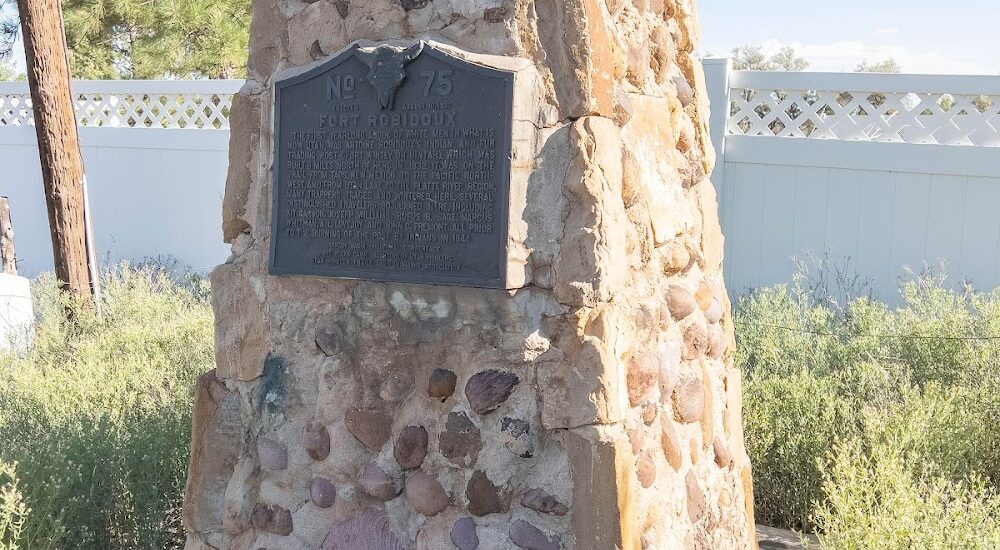Welcome to the Fort Robidoux Monument in Fort Duchesne, Utah, a site steeped in the early history of European-American settlement in the region. In 1828, four French traders from Kentucky, including William Reed, Jim Reed, Dennis Julien, and Augustus Archambeaux, ventured into the Uintah Basin. They established one of Utah’s first European-American trading posts near a spring south and east of what is now Whiterocks. This strategic location was at the crossroads of trails used by the local Ute people, facilitating trade and cultural exchanges.
In 1832, Antoine Robidoux, a noted French trapper and trader, purchased the post and expanded it into a larger fort. This establishment was known as Fort Robidoux or Fort Uinta. The fort became a bustling hub for fur traders engaging with Native American tribes, exchanging goods such as butcher knives and coffee beans for valuable furs. Unfortunately, the fort’s story came to an abrupt end in 1844 when it was burned down by Utes, amidst rising tensions between the traders and the indigenous people.
Despite its destruction, Fort Robidoux played a pivotal role in opening up the region to further exploration and settlement. It served as a gateway for traders and trappers, and its legacy lived on in the form of trail networks that continued to be used by settlers and Native Americans alike.
The broader historical context of Fort Robidoux is intertwined with the shifting dynamics between European settlers and Native American tribes during the early 19th century. The establishment of trading posts like Fort Robidoux was part of a larger movement of westward expansion, driven by the lucrative fur trade and the exploration of new territories.
Today, the monument stands as a reminder of these early interactions and the complex history of the region. Visitors can reflect on the stories of the traders and Native Americans who once crossed paths here, each shaping the history of Utah in their own way.






